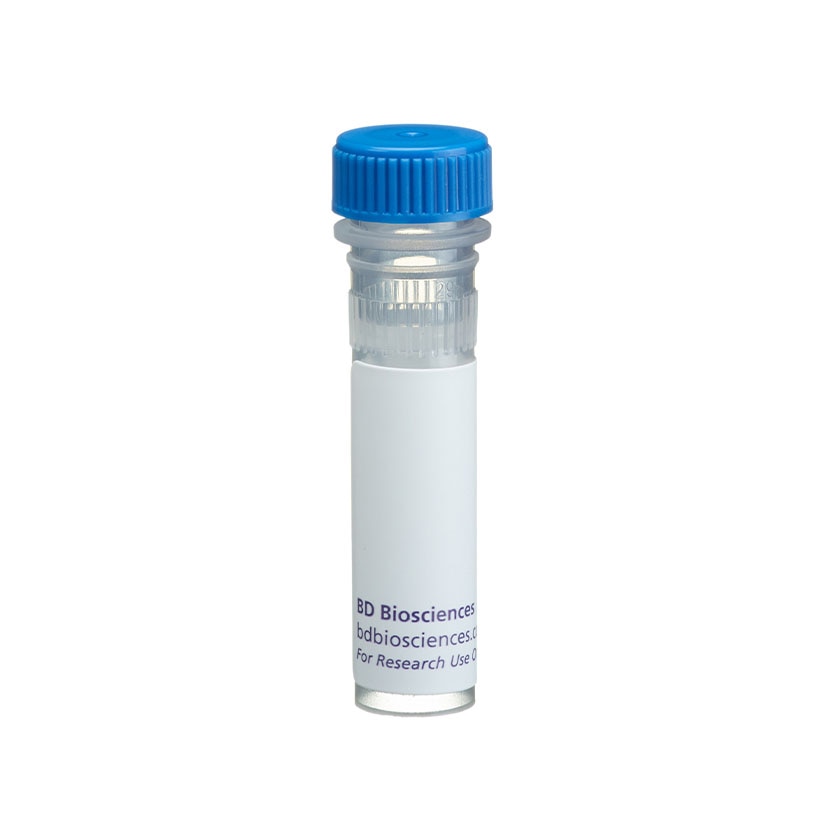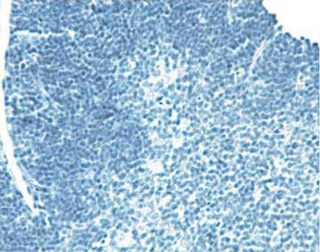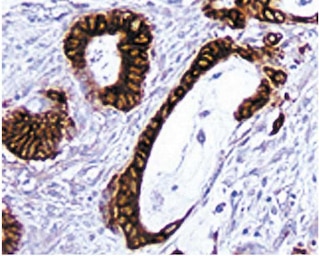Old Browser
This page has been recently translated and is available in French now.
Looks like you're visiting us from {countryName}.
Would you like to stay on the current country site or be switched to your country?




Immunohistochemical staining of rat leukocytes: Zinc-fixed paraffin sections of normal rat intestine were reacted with the anti-CD45 antibody. Leukocytes expressing CD45 can be identified by the brown labeling of their cell membranes. Amplification 20X.


BD Pharmingen™ Purified Mouse Anti-Rat CD45

Regulatory Status Legend
Any use of products other than the permitted use without the express written authorization of Becton, Dickinson and Company is strictly prohibited.
Preparation And Storage
Recommended Assay Procedures
Immunohistochemistry: The OX-1 antibody specific for rat CD45 is recommended to test for immunohistochemical staining of Zinc-fixed paraffin sections. Isotype control recommended for use with this antibody is purified mouse IgG1 (Cat. No. 550878). For optimal indirect immunohistochemical staining, the OX-1 antibody should be titrated (1:10 to 1:50 dilution) and visualized via a three-step staining procedure in combination with polyclonal biotin conjugated anti-mouse Igs (multiple adsorbed) (Cat. No. 550337) as the secondary antibody and Streptavidin-HRP (Cat No 550946) together with the DAB detection system (Cat No 550880).
Product Notices
- Since applications vary, each investigator should titrate the reagent to obtain optimal results.
- Caution: Sodium azide yields highly toxic hydrazoic acid under acidic conditions. Dilute azide compounds in running water before discarding to avoid accumulation of potentially explosive deposits in plumbing.
- Source of all serum proteins is from USDA inspected abattoirs located in the United States.
- An isotype control should be used at the same concentration as the antibody of interest.
- This antibody has been developed for the immunohistochemistry application. However, a routine immunohistochemistry test is not performed on every lot. Researchers are encouraged to titrate the reagent for optimal performance.
- Please refer to www.bdbiosciences.com/us/s/resources for technical protocols.
Companion Products





The OX-1 antibody recognizes all molecular forms of CD45 (Leukocyte Common Antigen) on all hematopoietic cells except erythrocytes. CD45 is a member of the Protein Tyrosine Phosphatase (PTP) family; its intracellular (COOH-terminal) region contains two PTP catalytic domains while the extracellular region is highly variable due to alternative splicing of exons 4, 5, and 6 (designated A, B, and C, respectively), and differing levels of glycosylation. The CD45 isoforms detected in rat are cell type-, maturation-, and activation state-specific. The CD45 isoforms play complex roles in T-cell and B-cell antigen receptor signal transduction.
Development References (4)
-
Johnson P, Maiti A, Ng DHW. CD45: A family of leukocyte-specific cell surface glycoproteins. In: Herzenberg LA, Weir DM, Herzenberg LA, Blackwell C , ed. Weir's Handbook of Experimental Immunology, Vol 2. Cambridge: Blackwell Science; 1997:62.1-62.16.
-
Kampinga J, Aspinall R. Thymocyte differentiation and thymic micro-environment development in the fetal rat thymus: a immunohistological approach. In: Kendall MD, Ritter MA, ed. Role of the Thymus in Tolerance Induction, Vol 3. New York: Harwood Academic Publishers; 1990:149-186.
-
Sunderland CA, McMaster WR, Williams AF. Purification with monoclonal antibody of a predominant leukocyte-common antigen and glycoprotein from rat thymocytes. Eur J Immunol. 1979; 9(2):155-159. (Immunogen: Flow cytometry). View Reference
-
Woollett GR, Barclay AN, et al. Molecular and antigenic heterogeneity of the rat leukocyte common antigen from thymocytes and T and B lymphocytes. . Eur J Immunol. 1985; 15:168-173. (Biology).
Please refer to Support Documents for Quality Certificates
Global - Refer to manufacturer's instructions for use and related User Manuals and Technical data sheets before using this products as described
Comparisons, where applicable, are made against older BD Technology, manual methods or are general performance claims. Comparisons are not made against non-BD technologies, unless otherwise noted.
For Research Use Only. Not for use in diagnostic or therapeutic procedures.
Report a Site Issue
This form is intended to help us improve our website experience. For other support, please visit our Contact Us page.